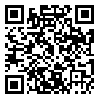Volume 10, Issue 3 (6-2021)
JCP 2021, 10(3): 483-492 |
Back to browse issues page
Download citation:
BibTeX | RIS | EndNote | Medlars | ProCite | Reference Manager | RefWorks
Send citation to:



BibTeX | RIS | EndNote | Medlars | ProCite | Reference Manager | RefWorks
Send citation to:
Lekchiri S, Hakim T, Zahir H, Benabbes R, El Fazazi K, Zanane C, et al . Interfacial mechanisms involved in the interaction between Fusarium oxysporum f. sp. albedinis and date palm root. JCP 2021; 10 (3) :483-492
URL: http://jcp.modares.ac.ir/article-3-43053-en.html
URL: http://jcp.modares.ac.ir/article-3-43053-en.html
Souad Lekchiri *  1, Taoufik Hakim2
1, Taoufik Hakim2  , Hafida Zahir2
, Hafida Zahir2  , Redouane Benabbes3
, Redouane Benabbes3  , Kaoutar El Fazazi2
, Kaoutar El Fazazi2  , Chorouk Zanane2
, Chorouk Zanane2  , Abdeslam Jaafari2
, Abdeslam Jaafari2  , Mostafa ELLouali2
, Mostafa ELLouali2  , Hassane Latrache2
, Hassane Latrache2 

 1, Taoufik Hakim2
1, Taoufik Hakim2  , Hafida Zahir2
, Hafida Zahir2  , Redouane Benabbes3
, Redouane Benabbes3  , Kaoutar El Fazazi2
, Kaoutar El Fazazi2  , Chorouk Zanane2
, Chorouk Zanane2  , Abdeslam Jaafari2
, Abdeslam Jaafari2  , Mostafa ELLouali2
, Mostafa ELLouali2  , Hassane Latrache2
, Hassane Latrache2 

1- Bioprocess and Biointerface Laboratory, Faculty of Science and Techniques, Sultan Moulay Slimane University, BP: 523, BeniMellal, 23000, Morocco. , abdeslamjaafari@gmail.com
2- Bioprocess and Biointerface Laboratory, Faculty of Science and Techniques, Sultan Moulay Slimane University, BP: 523, BeniMellal, 23000, Morocco.
3- Faculty of Sciences, Mohammed I University, BP: 717, Bd Mohammed VI, Oujda, Morocco.
2- Bioprocess and Biointerface Laboratory, Faculty of Science and Techniques, Sultan Moulay Slimane University, BP: 523, BeniMellal, 23000, Morocco.
3- Faculty of Sciences, Mohammed I University, BP: 717, Bd Mohammed VI, Oujda, Morocco.
Abstract: (2852 Views)
Our study aims to evaluate the physicochemical mechanism involved in the adhesion of Fusarium oxysporum f. sp. albedinis (Foa) on date palm root of resistant (Aziza M) and susceptible (Boufegouss) varieties by determining their surface properties. Hydrophobicity of Date palm root and Foa was evaluated by contact angle measurement (θw) and free energy of interaction determination (∆Giwi). Our results showed that Foa surface is hydrophilic (θw = 30.57° and ΔGiwi = 15.51 mj/m2) and has an important electron donor character (γ- = 53,99mj/m2), whereas its electron acceptor property is low (γ+ = 8.95 mj/m2). Regarding date palm, the surface of sensitive variety’s root is hydrophilic (θw = 62.97°), while that of resistant variety is hydrophobic (θw = 69.50°). This character was confirmed by quantitative approach (ΔGiwi = 6.84 mj/m2 for sensitive variety and ΔGiwi = -20.61 mj/m2 for resistant variety). Also, it was noted that both resistant and sensitive varieties are weak electron acceptors (γ + = 0.15 mj/m2 and γ + = 0.08 mj/m2 for resistant and sensitive varieties respectively). The two varieties are relatively important electron donors, but the sensitive variety is more donor (γ- = 30.5 mj/m2) than the resistant one (γ- = 16.57 mj/m2). These results suggest that hydrophilic character and electron donor/acceptor character may be responsible for the adhesion of Foa on sensitive date palm root and therefore causes its susceptibility to bayoud disease. In contrast, the hydrophobic character of the resistant variety could explain its resistance.
Article Type: Original Research |
Subject:
Mycology and Fungal Plant Diseases
Received: 2020/05/21 | Accepted: 2021/05/26 | Published: 2021/07/7
Received: 2020/05/21 | Accepted: 2021/05/26 | Published: 2021/07/7
Send email to the article author
| Rights and permissions | |
 |
This work is licensed under a Creative Commons Attribution-NonCommercial 4.0 International License. |







